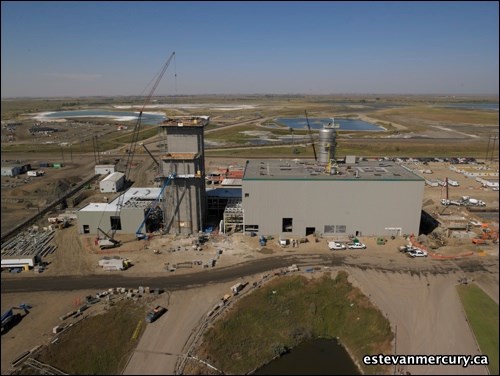SaskPower and the Boundary Dam clean coal project deserved a slot in the top news stories of the year, just as it has in the past and probably will in the future ... 2013 and 2014 for sure since 2014 is the target date for the project to move into its first testing phase.
What made this $1.24 billion project an even bigger news story in 2012 was the add-on components that were maybe not as spectacular as the original clean coal announcement, but certainly deserving of major attention since they represented millions of dollars in investment on site, as well as within the community.
The Aquistore element entered the picture in July as a fresh news story. It entered into a testing phase by the Petroleum Technology Research Centre. In September they reported that the evaluation well they were drilling for storage of carbon dioxide had become the deepest well ever drilled in Saskatchewan at just over 3.3 kilometres.
Then SaskPower announced that a newly constructed $21.2 million fly ash collection and loading facility was launched and they had entered into a 10-year contract agreement with Lehigh Hanson Materials to have them market and sell fly ash coming out of SaskPower's local power station at Boundary Dam. SaskPower's president Robert Watson said the corporation had been able to sell about 110,000 tonnes of fly ash the previous year, around 40 per cent of total production, for approximately $6 million. Fly ash, which is primarily used in cement production, could be sold in a broader market with the Hanson Materials team taking on the task, it was suggested.
Next up was the SaskPower's unleashing of a plan to implement a $60 million test facility for carbon and other gases capture at neighbouring Shand Power Station. The impact of this project was outlined during a company open house in the new Saskatchewan Energy Training Institute.
The BD3 project leader Doug Daverne was on hand to provide details on that huge project which was nearing the half-way point while Max Ball explained some of the features of the Shand test facility that will allow national and international companies opportunities to experiment with their own capture programs using Shand's infrastructure and up to six megawatts of power. It was reported that Hitachi had already come on board as a 50/50 partner, providing $30 million and thus gaining first dibs on the testing site once it is completed sometime in early 2014.
In the meantime, the major BD3 project moved along on pace and within budget with SNC Lavalin as lead contractor. Over 800 construction workers were on site during peak periods and up to 950 are expected to be on the site this coming summer.
So for these huge reasons, SaskPower and the BD3 and their value-added projects gain a nod as one of our top five news stories of 2012.




